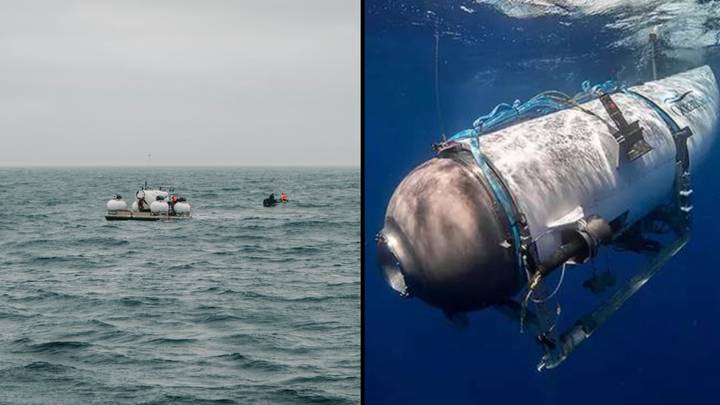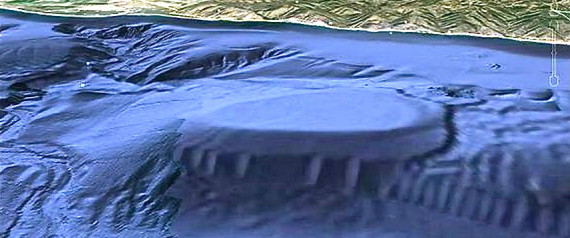Uncovering the Truth Behind Deep Sea Implosions: A Mythbusters Investigation
Diving Into the Mystery: Deep Sea Implosions ===
The deep sea has always been a source of fascination and mystery for humans. With its vast and unexplored depths, it is home to some of the most bizarre and elusive creatures on the planet. But amidst the wonders of the deep sea, there is a phenomenon that has captured the imagination of many – deep sea implosions.
It is said that the immense pressure in the depths of the ocean can cause objects to implode, creating a loud and powerful sound that can be heard for miles. But is this really true or just another myth? To find out, the popular science show “Mythbusters” decided to take on the challenge and uncover the truth behind these deep sea implosions.
===Myth or Reality: Debunking Deep Sea Implosion Claims ===
There have been many claims and rumors surrounding deep sea implosions, with some even suggesting that it can sink ships and destroy submarines. But the truth is, these are just myths. In reality, deep sea implosions are not nearly as powerful or destructive as they are made out to be.
While it is true that objects can implode in the deep sea, it is not due to the immense pressure alone. In fact, there are other factors at play that contribute to the implosion of objects in the deep sea.
===The Truth Behind the Beast: Understanding Implosions ===
To truly understand deep sea implosions, we must first understand the concept of pressure. As we descend deeper into the ocean, the pressure increases significantly. At the depths of the Mariana Trench, for example, the pressure can reach a staggering 15,000 pounds per square inch. This immense pressure can cause air pockets within objects to compress, leading to implosion.
However, it is not just the pressure that causes objects to implode. The material, shape, and structure of the object also play a crucial role. For instance, hollow objects are more likely to implode compared to solid ones because they have a greater surface area and can hold more air.
===Uncovering the Secrets: Investigating Deep Sea Implosions ===
Armed with the facts about implosions, the Mythbusters team set out to investigate deep sea implosions and separate myth from reality. They conducted a series of experiments using different objects, including a steel drum and a plastic bottle, and subjected them to varying depths of pressure.
Through their experiments, they were able to prove that implosions do occur in the deep sea but they are not as powerful as they are often portrayed. The team also found that the implosive force can be amplified by creating air pockets within the objects.
===From Mythbusters to the Deep Sea: A Challenging Mission ===
To truly put their findings to the test, the Mythbusters team embarked on a mission to the depths of the ocean. They traveled to the Gulf of Mexico, which is home to the world’s deepest oil drilling platform, the Perdido. Here, they were able to use the platform’s submersible to descend to a depth of 8,500 feet and witness implosions firsthand.
This was no easy feat, as deep sea exploration comes with its own set of challenges. The team had to deal with extreme pressure, cold temperatures, and limited visibility. But their determination to uncover the truth behind deep sea implosions pushed them to overcome these obstacles.
===The Science Behind the Phenomenon: Exploring Implosions ===
The Mythbusters team discovered that implosions in the deep sea are caused by a combination of factors including pressure, air pockets, and the material and structure of the object. They were also able to capture the implosions on camera, showing that they are not as loud or destructive as they are often portrayed.
They also found that implosive events can occur in different forms such as a sudden burst of air, a loud popping sound, or even a gentle hiss. These different forms of implosions are influenced by the shape and material of the object, making each implosion unique.
===The Pressure is On: Examining Deep Sea Environments ===
The Mythbusters team also learned a great deal about the deep sea environment and how it affects implosions. They discovered that there are different pressure zones in the ocean, with the deepest parts having the highest pressure. But even in shallower depths, objects can still implode due to the surrounding pressure.
They also found that the type of water can affect the implosive force. For example, saltwater has a higher density compared to freshwater, making it more likely for objects to implode in saltwater.
===Cracking the Code: How Implosions Really Happen ===
After conducting numerous experiments and witnessing implosions in the deep sea, the Mythbusters team was able to crack the code behind these mysterious events. They concluded that implosions occur due to a combination of factors, with pressure being the main contributor.
They also found that the shape and material of the object can greatly influence the implosive force. Objects with a greater surface area and air pockets are more likely to implode compared to solid and compact objects.
===Exploring the Depths: Where Do Implosions Occur? ===
While implosions can occur at any depth in the ocean, they are more likely to happen in the deepest parts where the pressure is the highest. This is why implosions are often associated with the Mariana Trench, which is the deepest point in the ocean.
However, implosions can also occur at shallower depths, especially in areas where there are sudden changes in pressure such as near underwater cliffs or oil drilling platforms.
===Myths vs. Facts: Setting the Record Straight on Implosions ===
Thanks to the Mythbusters team, we now have a better understanding of deep sea implosions and can separate fact from fiction. While implosions can indeed occur in the deep sea, they are not nearly as powerful or destructive as they are often portrayed.
The team also dispelled the myth that deep sea implosions can sink ships or destroy submarines. In reality, these vessels are built to withstand immense pressure and are not at risk of implosion in the deep sea.
===The Role of Technology: Tools for Studying Deep Sea Implosions ===
One of the key factors that allowed the Mythbusters team to uncover the truth behind deep sea implosions was technology. From their experiments in a controlled environment to their deep sea exploration, they relied on advanced equipment and tools to study implosions.
They also used specialized cameras and sonar equipment to capture implosions and gather data. Without these technological advancements, it would have been nearly impossible to conduct such a comprehensive investigation.
===The Final Verdict: What We Learned from Our Investigation ===
In conclusion, the Mythbusters team was able to debunk the myths and uncover the truth behind deep sea implosions. They found that implosions do occur in the deep sea but are not nearly as powerful or destructive as they are often portrayed.
Through their experiments and deep sea exploration, they were able to understand the science behind implosions and the factors that contribute to them. Their investigation also shed light on the challenging and fascinating world of the deep sea.



